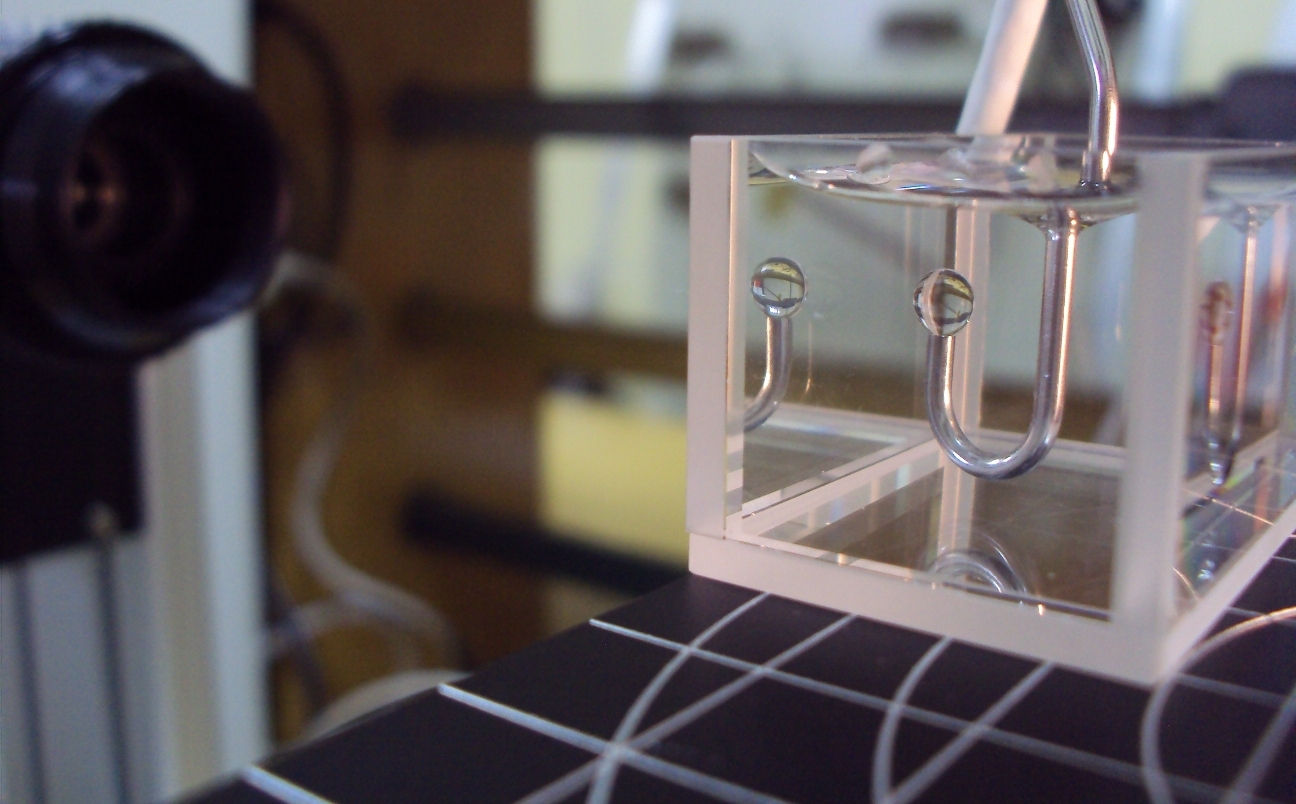
Professor Eduardo R. de A. Lima
Sou um parágrafo. Clique aqui para adicionar e editar seu próprio texto. É fácil.
© 2018 Professor Eduardo
Theoretical and Experimental Study of Stability of Emulsions
2012 - Present
Description: Emulsions are colloidal systems in which both phases (dispersed and dispersant) are liquids. The stability of such systems is delicate and, in most cases depends on a third component, the emulsifier. The stability of emulsions comprises many areas such as mining and oil exploration, petrochemicals, fuels, pharmacy, cosmetics and food industries. This study depends on the interaction between the particles (droplets) dispersed in the continuous phase. Important variables of this analysis are the particle size and zeta potential. In this project, the stability of colloidal systems will be studied by means of different techniques. These techniques will be compared to the tracking of particle size increasing kinetics and zeta potential in different conditions. From these data it will be possible to develop a thermodynamic model to predict the stability of such systems in various conditions. Another objective is to develop analytical methods which are more practical and can be used in loco and online. The systems to be analyzed include biodiesel and petroleum fractions.
Status: In progress;
Nature: Research.
Students involved: Academic Masters (1).
Members: Marcio Paredes / Alexandre Torres / Patricia Mendes de Azevedo / Eduardo Lima
Projects by Professor Eduardo
Calculation and Measurement of Physicochemical Properties
of Oil-Water Systems
2011 - Present
Description: The process of oil drilling at sea results in the inevitable contact between salt water and oil. Although water and oil are practically immiscible mixture thereof can form considerably stable emulsions. The presence of these emulsions in most cases is unwanted in the petrochemical industry. Thus, they seek ways to destabilize them. Obtaining oil free of water and regenerating of the water used in the process depend on the destabilization of water/oil emulsions and oil/water, respectively. Hence, the knowledge of physicochemical properties of colloidal systems involving water and oil in the presence of various salts in different concentrations is very important for the development of more efficient separation processes in the petroleum industry. In this project, the physicochemical properties of oil-water systems - in particular its interfacial properties - are measured. An adequate theory - Poisson-Boltzmann or DFT - will be proposed to explain the influence of the concentration of different salts on these properties. This same theory can be used to predict the stability of water-oil emulsions under different conditions, providing valuable information to separating process in the oil industry.
Status: In progress
Nature: Search
Members: Marcio Luis Lyra Paredes / Eduardo Rocha de Almeida Lima.
Funder (s): CAPES and FAPERJ
Theoretical and Experimental Study of Stability of Colloidal Systems: application to oil and gas, biochemistry, cosmetics and food.
2016 -
Description: in the experimental line measurements related to the stability of emulsions, foams and sols will be made, in different operational conditions, in the presence of different salts and as a function of the method used in the formation of these systems. The experimental techniques used involve tensiometry, size distribution, zeta potencial and dynamic tests of stability. In the theoretical-computational line we study the electric double layer in systems containing electrolytes through continuous methods like the modified Poisson-Boltzmann equation and Density Functional Theory (DFT).
Situation: in progress.
Members: Eduardo Rocha de Almeida Lima - Coordinator / Nathalia Salles Vernin Barbosa / Rita de Cássia Carnelós / Patricia Braz Ximango.
Casimir Effects and van der Waals Forces in Multilayer Systems
2016 -
Description: The project focus on fundamental physics in systems acted upon by electromagnetic vacuum fluctuations. The effect goes under the name of the Casimir effect. The associated forces are for the most part small, but can in the region of sub-micron gaps become quite strong. The effect can therefore be of practical importance in connection with MEMS and NEMS devices.
Situation: In progress.
Members: Eduardo Rocha de Almeida Lima / Barry W. Ninham / Bo E. Sernelius / Drew F. Parsons / Boström, Mathias / Iver Brevik - Coordinator / Johan S. Høye / Stefan Y. Buhmann / Kimball A. Milton / Clas Persson / Kristian Berland.
Modeling of Interfacial Tension and Wettability of Systems Containing Salt Solution, Carbonate Rocks and Oil
2017 -
Situation: In progress
Members: Eduardo Rocha de Almeida Lima (D.Sc.); Nathalia Salles Vernin Barbosa (M.Sc.); Frederico Support: Petrobras